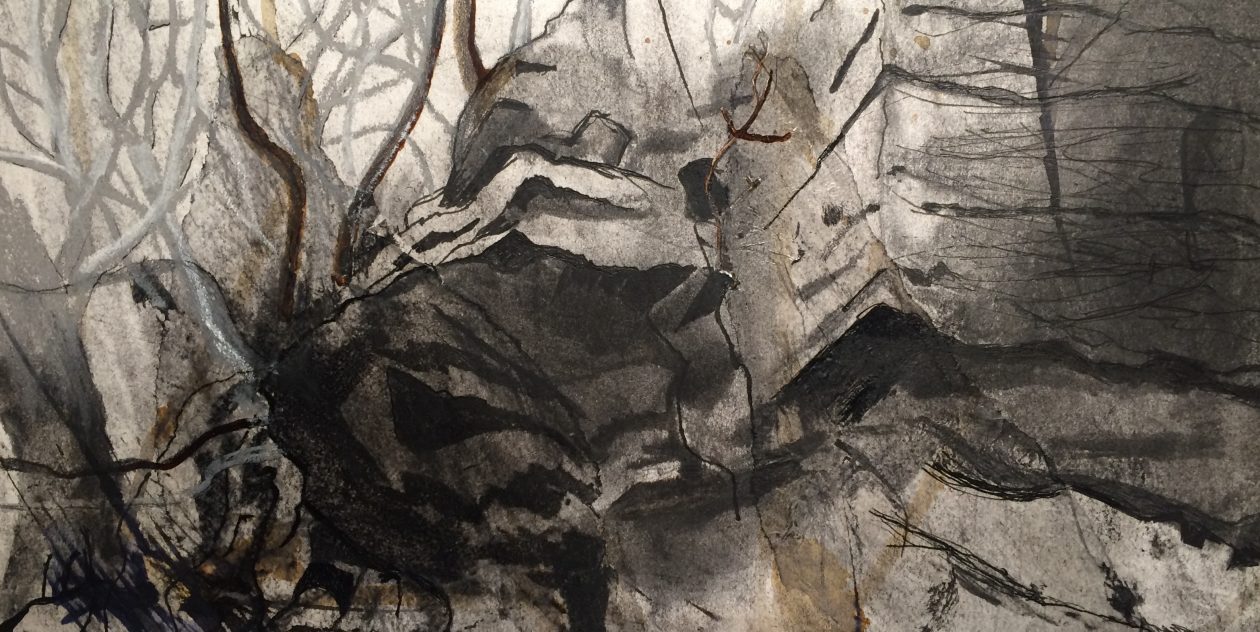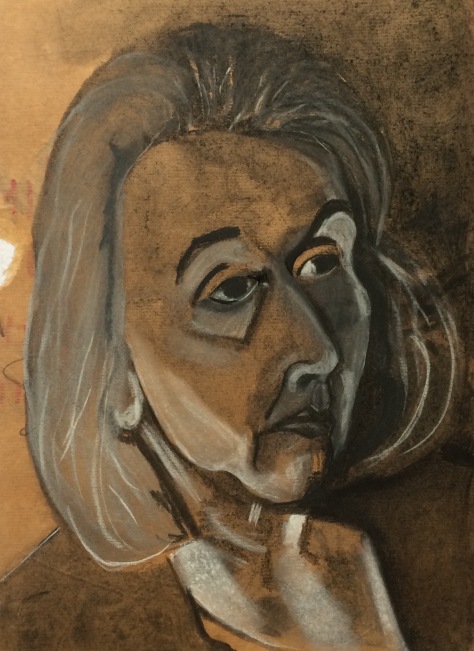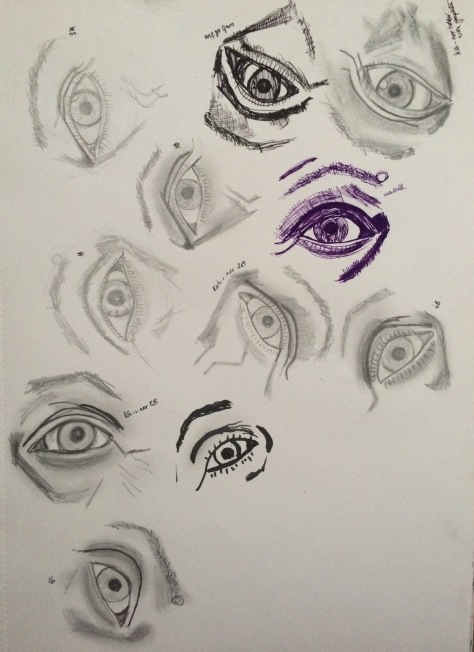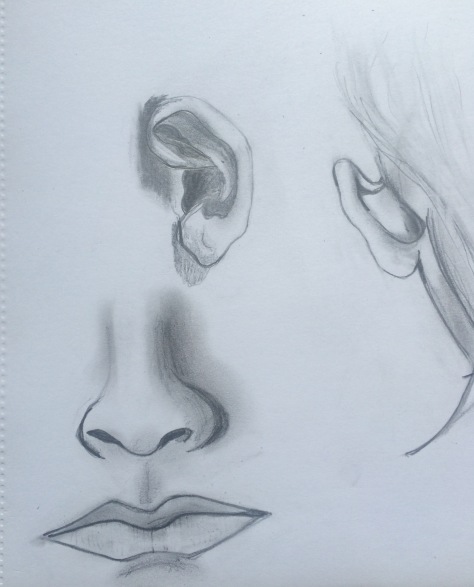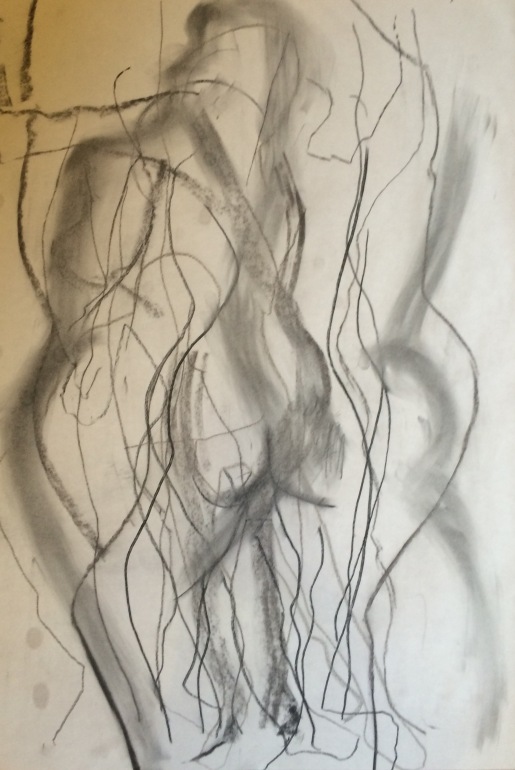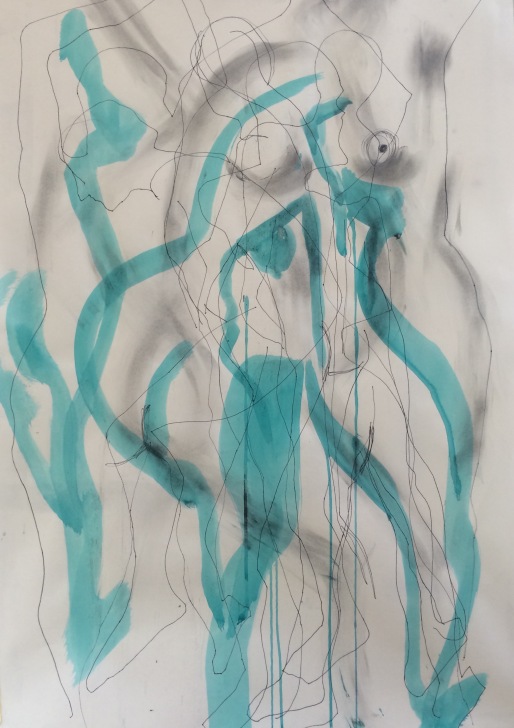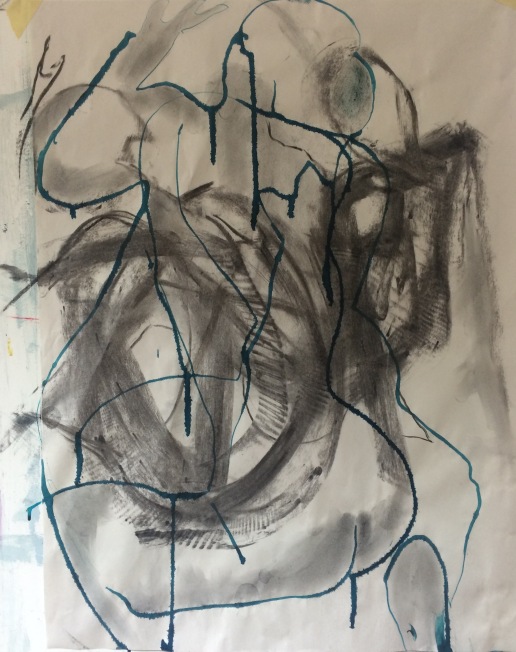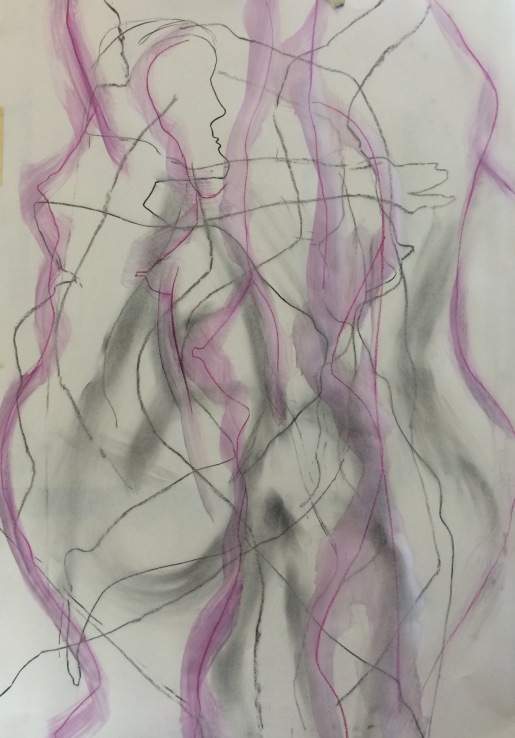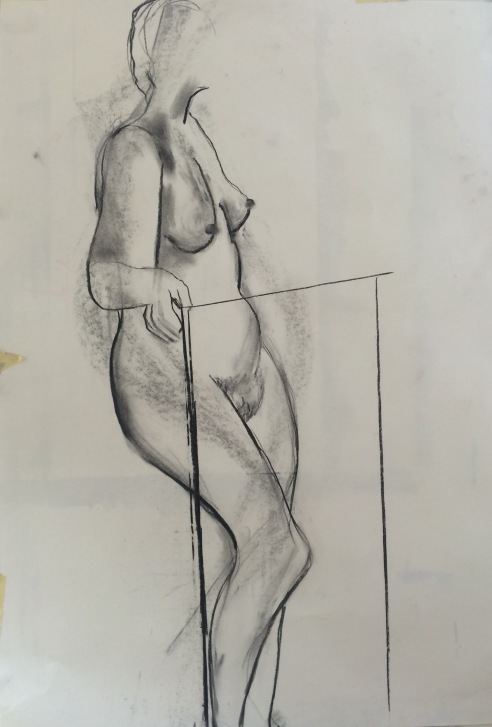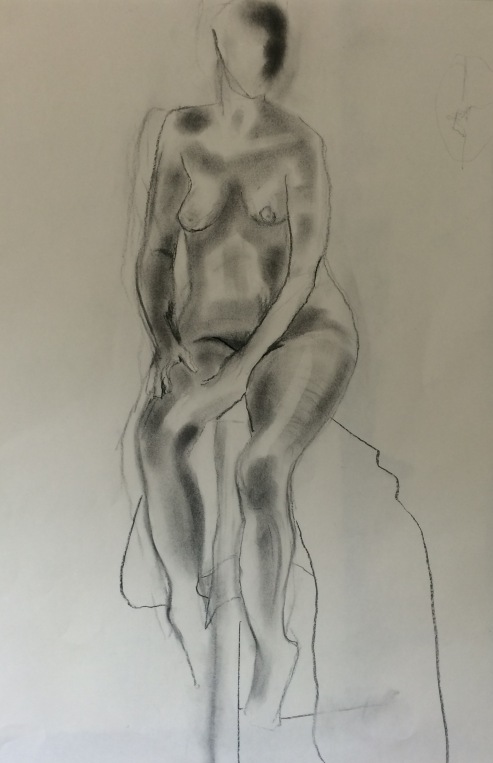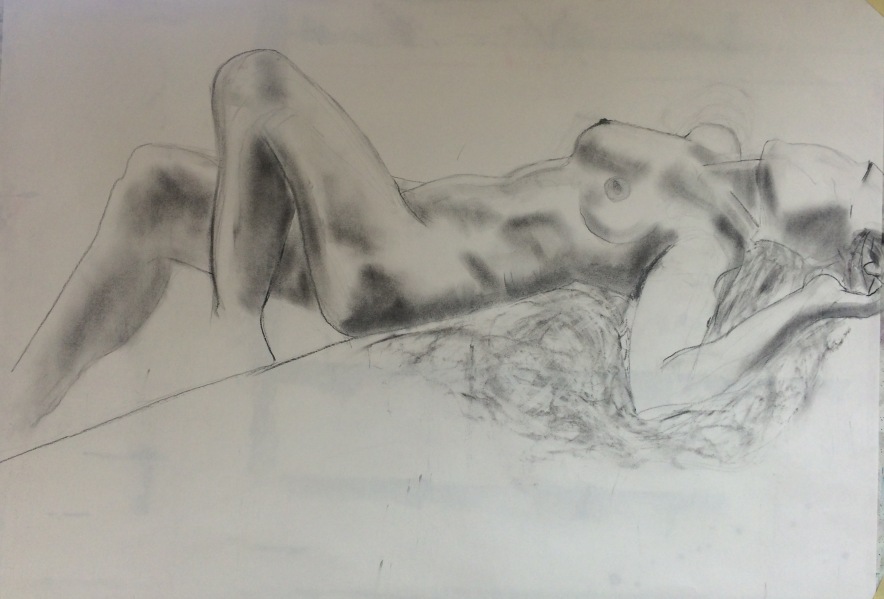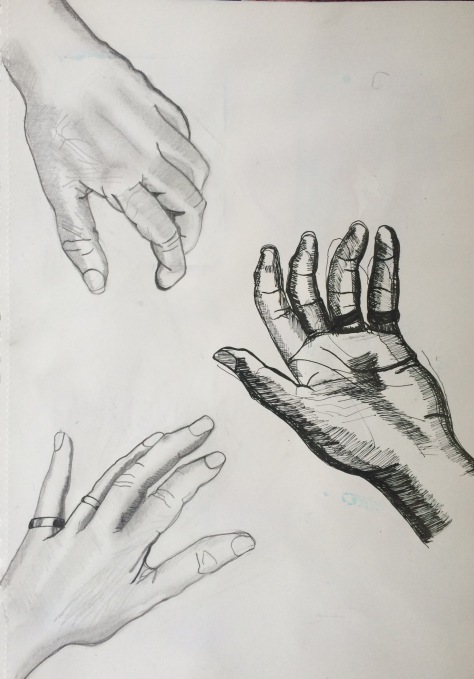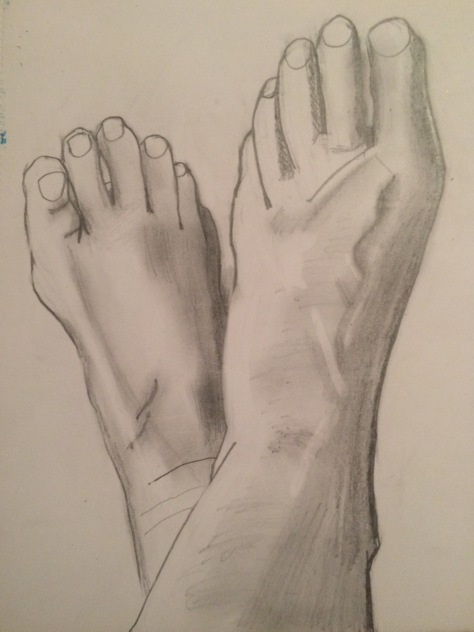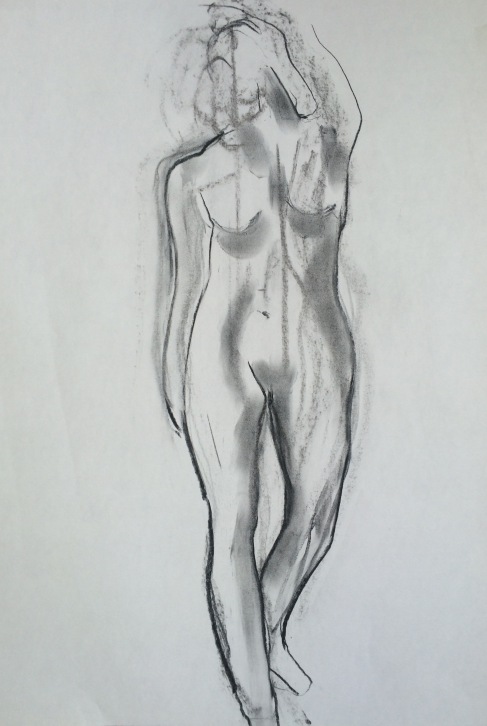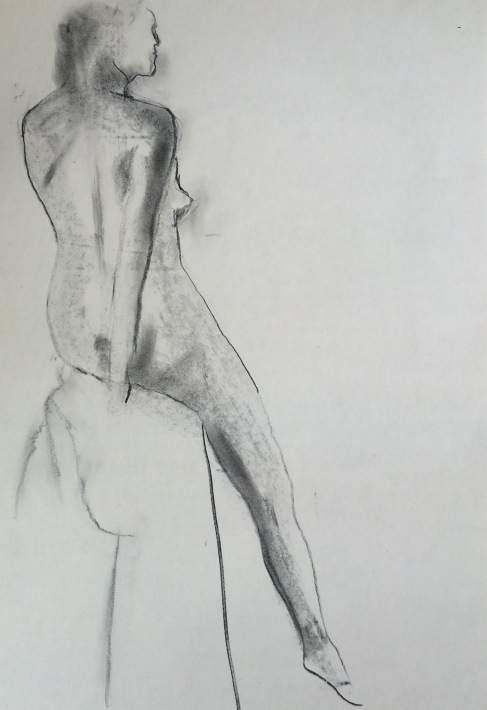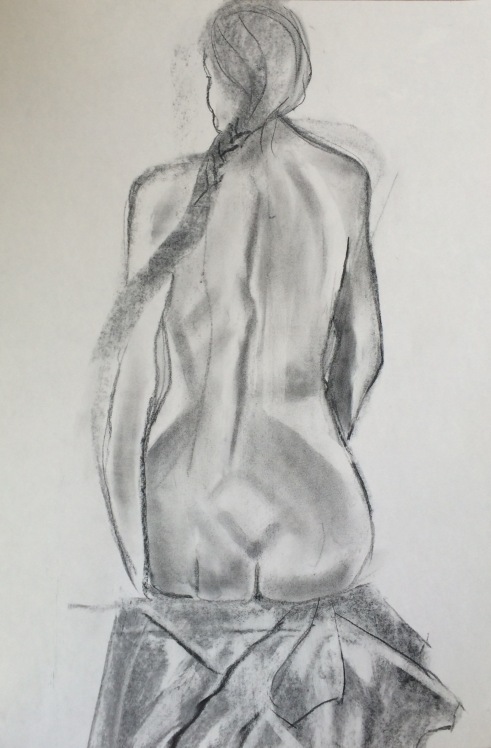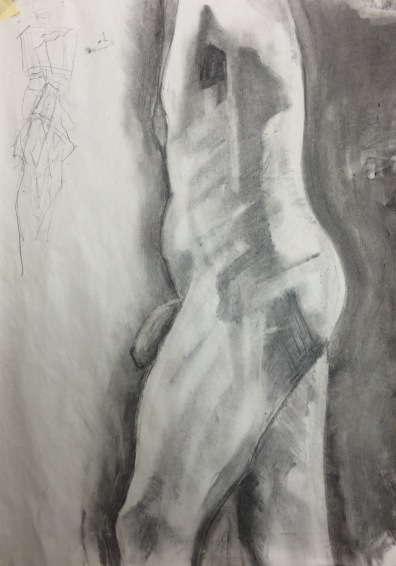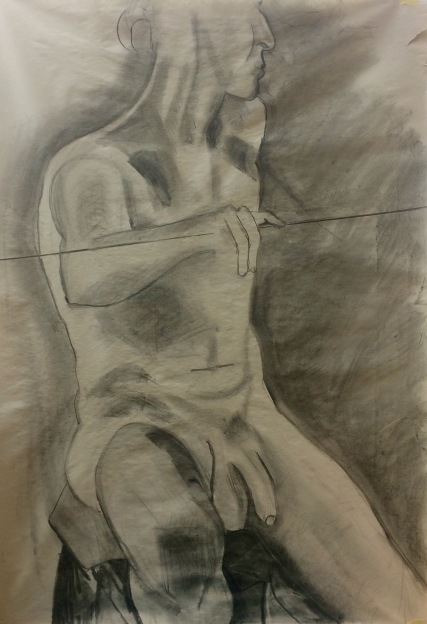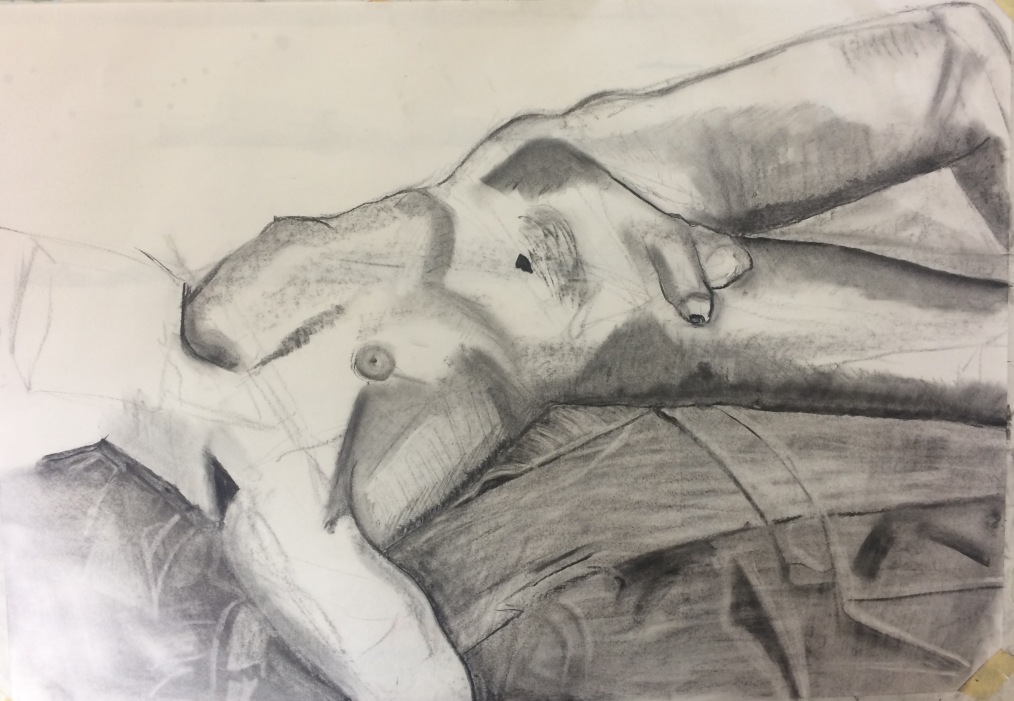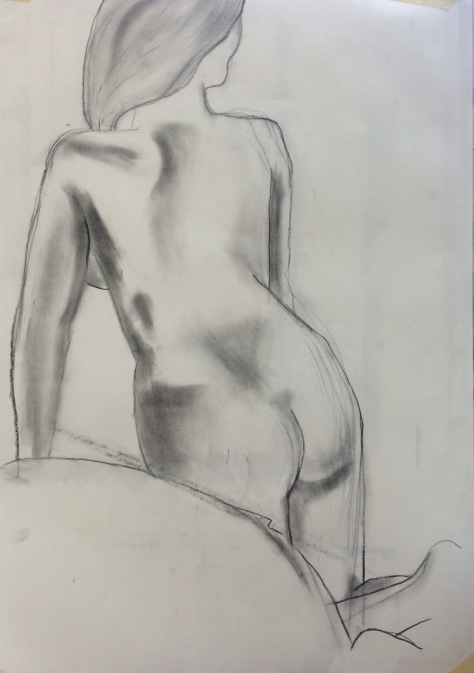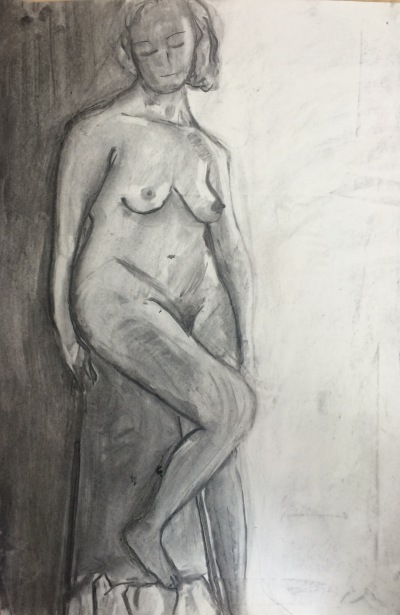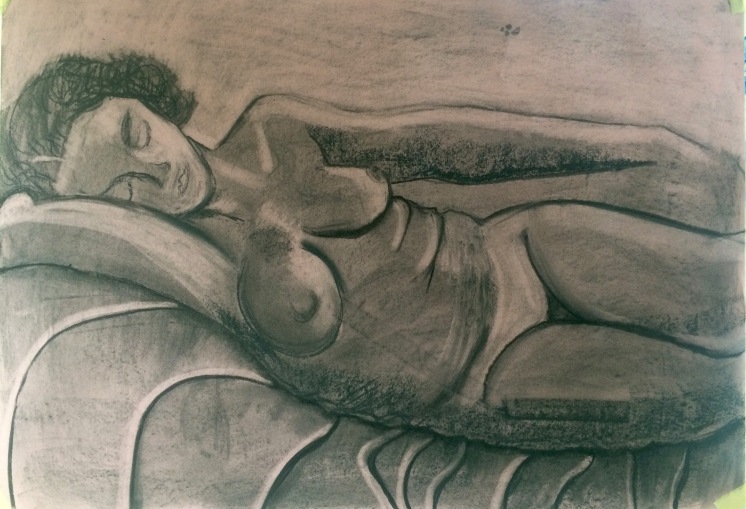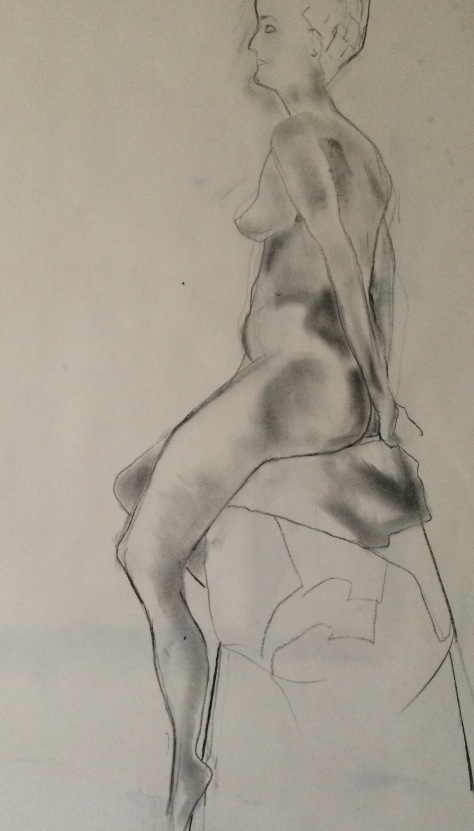I have learned a terrific amount from studying Drawing1. Much of this learning has been about the use of media. I have experimented a great deal with mixed media and tried many new techniques, including monoprinting, phototransfer and etching. I have used chalk pastels, oil pastels, conte crayons, liquid graphite, powdered charcoal, gesso, a whole variety of water and shellac based inks – all these are new to me. I understand much better which media can be combined for different effects. I have also been introduced to, and discovered many new artists and feel much better educated about art generally.
Assignment Two confirmed for me how important it is to have a research topic and that when I have a research question in mind I push the boundaries and get excited in a way that I do not when I am completing a set exercise. Assignment two also taught me to push through and keep going when things don’t work, and that often there is a way out the other side that would not have been achieved without things going wrong first.
I understand that exercises are there to introduce techniques and that I need to learn technique, but I have often felt quite bored by them. I am not inspired, for example, by drawing doorways. Life drawing exercises have been the exception – I think I started to develop an approach to building form by looking at the angles and planes of the body using fine willow charcoal and powdered charcoal that I would like to develop.
Assignment four was difficult for the same reason as the exercises. The ‘instructions’ were very specific – all three drawings on A1 and one figure must be in line and seated, the other in tone and reclining. However I did find both useful. First because I was forced to go big (this has been difficult for me on the course and each assignment has got slightly larger), and second because I thought about line and mark making in a different way, and about the relationship between foreground and background. In the tonal work for both the portrait and the reclining figure I thought carefully about tonal contrast and light source. In each of the three drawings for assignment 4, I thought about composition and use of space.
I will try to bear all of these elements in mind in assignment 5. My research question for assignment 5 is: ‘How can the sense of mysticism in the immutable Norber landscape be captured in drawings?’ I see this project as a development of assignments two and three, both of which were about ephemerality – this is about the opposite – endurance. To summarise, I will need to bear in mind:
- line and mark making
- tonal contrast
- composition and best use of space
- risk taking and experimentation
- pattern (Herbert Reid – ‘Endurance is the repetition of pattern.’)
- choice of support and drawing media to best explore the subject
I see my main weakness as procrastination and indecision before starting – once I get stuck in I make rapid decisions. I need to trust my intuitive responses more and not overthink. Most of all I should not worry so much and should have fun (as I did with assignment 2). This is consistent with feedback from my tutor for assignment 3: “Try and work more intuitively and directly on a larger scale.”
